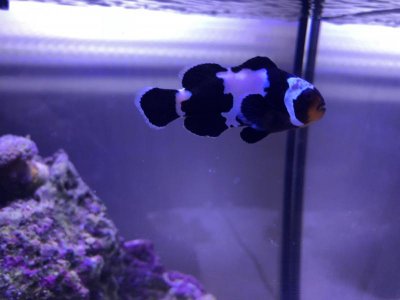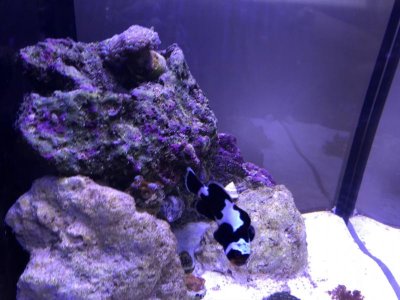Yesterday I noticed a few dark spots on my clownfish's head. She is a black snowflake and the spots are on her first white stripe. When I checked on the tank today she had several more of these dark patches on her head, meaning they appeared overnight. She is eating and acting normally. The male clownfish in the tank does not have any of these patches. I have coral in the tank so it could be sting marks, but am also concerned something else is causing it because they are on her head rather than body. Would someone be able to help me figure out what is causing this?
Some background info: Water quality tests yesterday showed 15 ppm of nitrates, nitrites and ammonia were 0 ppm, ph is 8, salinity 1.025, temp 79. Did a 30% water change yesterday of the tank, which is 10 gallons.
Some background info: Water quality tests yesterday showed 15 ppm of nitrates, nitrites and ammonia were 0 ppm, ph is 8, salinity 1.025, temp 79. Did a 30% water change yesterday of the tank, which is 10 gallons.



